[UPDATED]
While I hated the remake, one line from the new Karate Kid was this line in reference to the normality of water heater switches abroad and America's addiction with power:
"Get switch ... Save planet," mumbles Mr. Han (Jackie Chan)
Why install a on/off switch or timer to your water heater? Well for about $50 in parts you can save up to 30% of your power bill each month. I chose the switch because it costs $10, compared to a timer which is $100. A few months back while under the house I did some recon. My water heater which is currently wired directly is Energy Guide rated at $436 a year. Unfortunately I don't think it gets even close to that anymore. It's two decades old and the outer metal casing is showing severe signs of rusting.
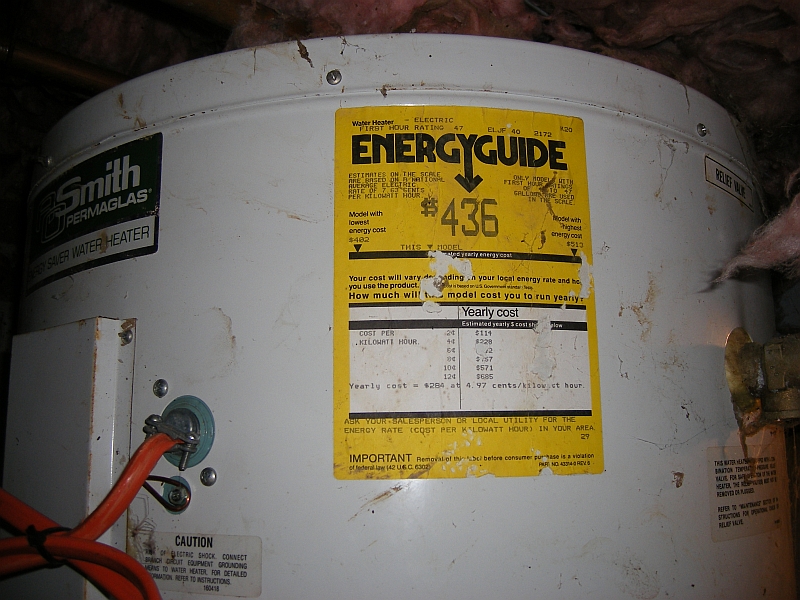
- Parts you need to add a switch to your water heater:
1) 1 30 Amp DPST light Switch from Home Depot ($10.00)
2) 1 Light switch electrical box. ($2.00)
3) 30 Amp electrical conduit. ($25-$50 depending on where you mount the switch)
4) 1 stud mountable electrical conduit box with cover.($6.00)
5) Wire caps ($1.00)
6) Conduit nails ($3.00)
Tools:
1) Screwdrivers.
2) Wire cutters.
3) Hammer.
4) Drill and large long bit.
5) Other various tools depending on where you mount the switch.
Quick Note: Something I didn't realize when I ripped out the drywall to install a switch is that they do make special switch boxes that mount on the outside of the drywall. This could be an excellent option instead of flush mounting the internal switch.
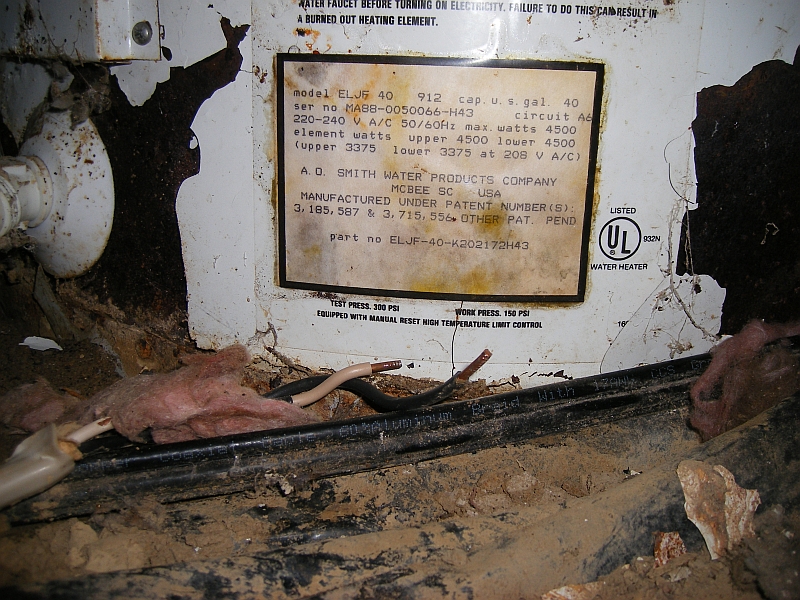
How to Install a switch on the water heater.
1) I didn't happen to capture photos of the switch install, but in my case I found my stud where I wanted to mount it. (He was very elusive.) Cut out the drywall, and mounted the switch box to the stud. Then I made another hole near the floor and drilled two large holes in the floor down into the crawl space. I then routed two cuts of power conduit through the holes into the switch. and wired it all in. Later I patched the wall with plaster and sanded, ready for paint.
2) With your switch wired and two runs of conduit running down to the water heater it's time to mount your metal conduit box on the stud, and tack the wires partially down. Two nails hold the box to the stud, and some careful hammering without taking out your water main should suffice.
3) Now is the time to find your power box and shut off all the power to your house so you don't get electrocuted.
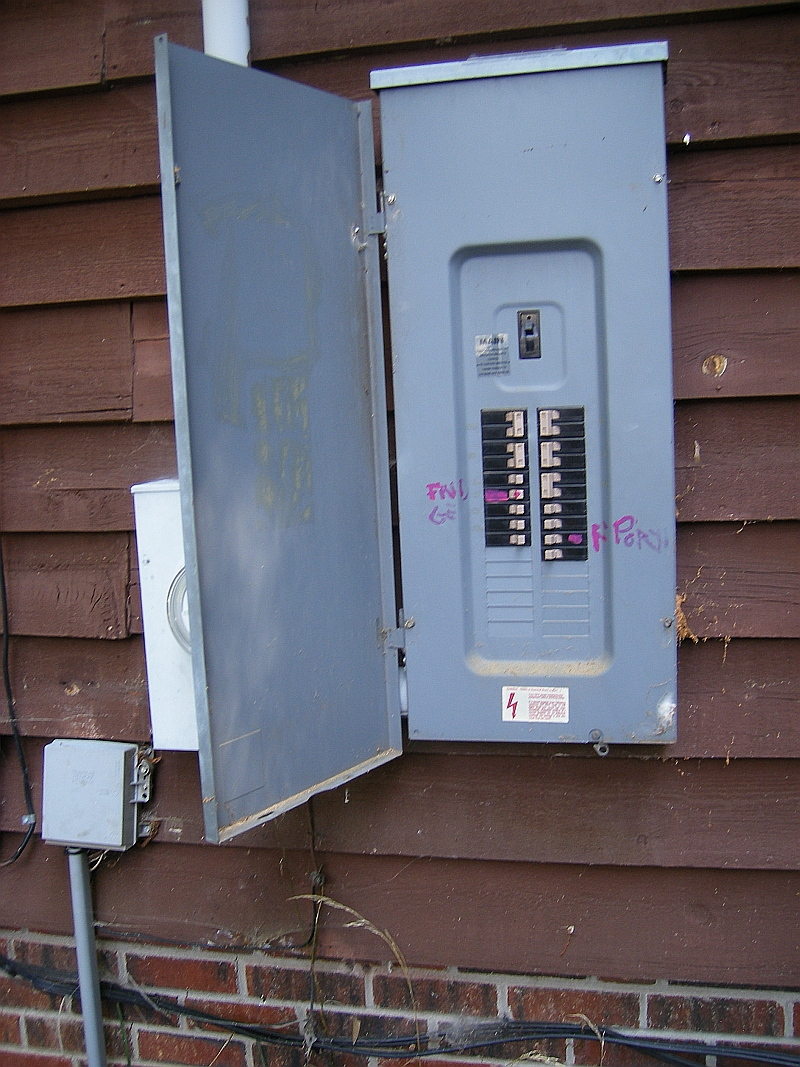
4) Next find your flashlight and your gumption because it's time to go to back to the place you just were. A place that gets more scary with no lights... Your crawl space access.
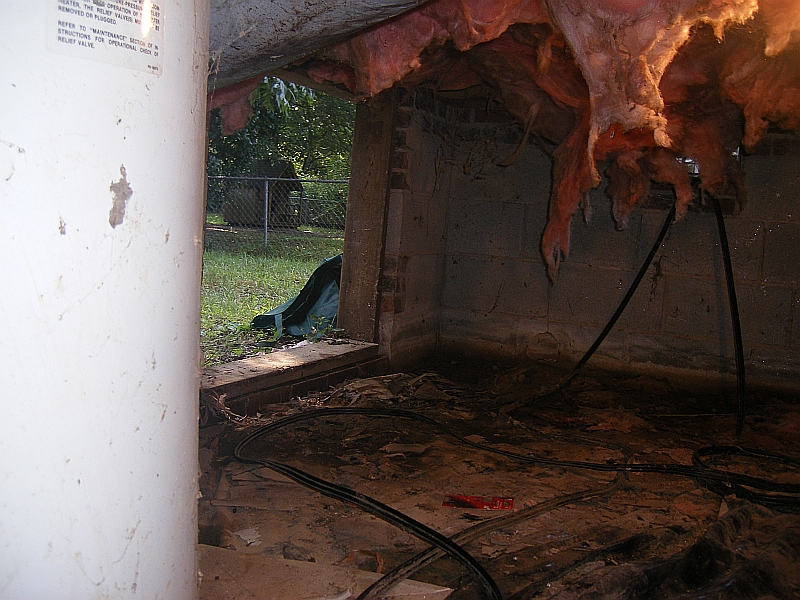
I'd like to point out while my sister is in Spain, staring lovingly down the eyes of some guapo, sipping Porto and enjoying life.... I was here:
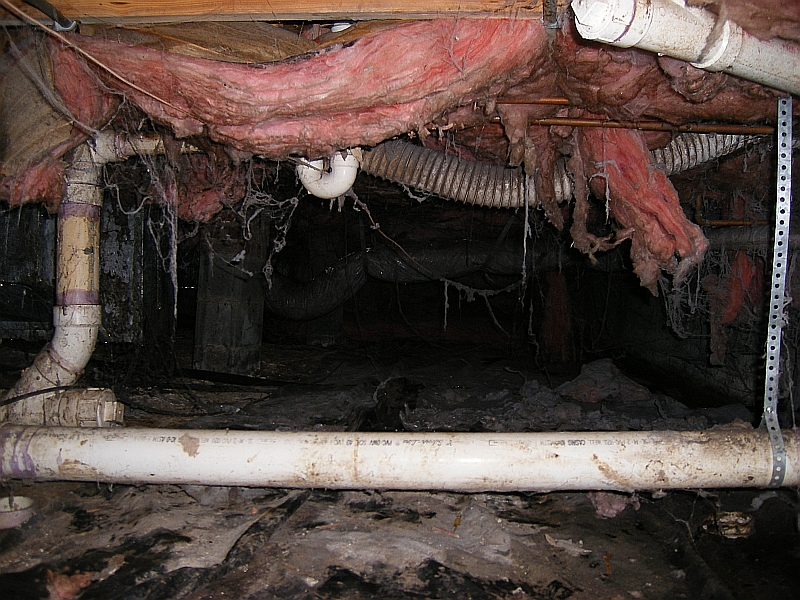
5) With the power off it's time to remove the current wiring to the water heater. It's accessed through the panel on the water heater. Pull it through the conduit port. (not sure if that's what it's called, but that's what I'm calling it.) Once free, feed it through your new conduit box you just mounted, connect color for color to one of your new switch leads and put wire caps on it. Tighten the wire mounts inside the box (if so equipped) and seal your conduit box with the metal lid.
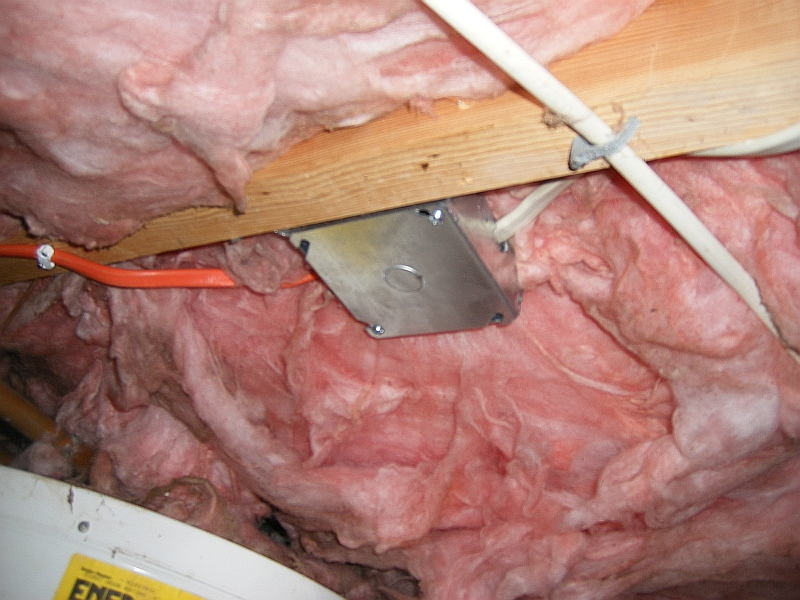
6) Now strip the other line going to the switch, and feed it where the original hard-wired conduit was in the water heater, reconnecting the power to the water heater. Replace insulation and cover and finish tacking all the wires to the stud away from hot water lines, etc.
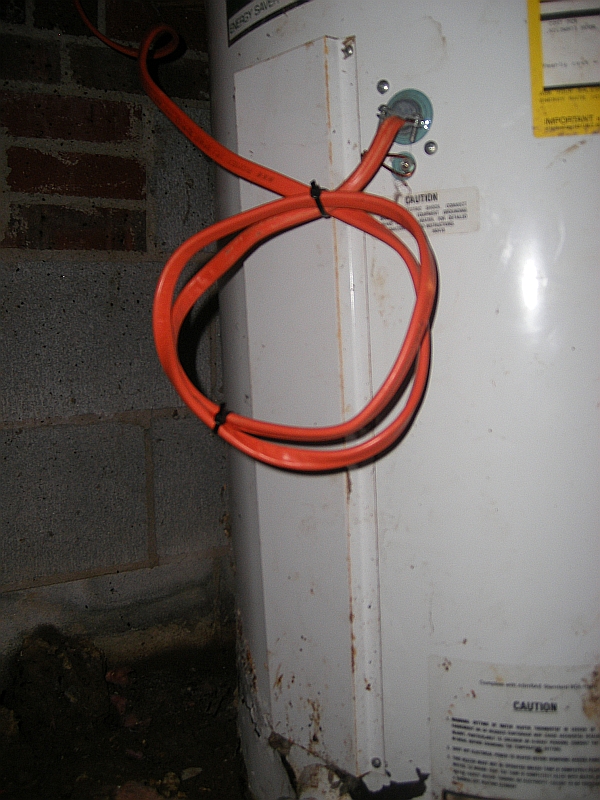
7) Turn your breakers back on and test your switch. If you don't blow a breaker and all is good, it's time for a nice shower and several hours of brushing the insulation out of your hair. YUCK!
What I've discovered:
1) I only use the water heater for about 3 hours a day.
2) If the water heater isn't used with the switch off from the previous day it only take it about 5 minutes to come up to temperature. If it runs out, (I like to leave it off and take luke-warm eco-showers) it takes about 30 minutes to reheat.
3) At least as of right now (summer), I can forget to turn it on and take a shower in the morning with fairly hot water. Nice to know if I oversleep this fall and can't afford the 5-15 min, preheat time.
4) As a result, my family of four has saved between 200-300 Kwh per month.

